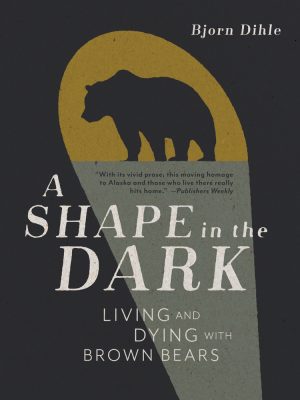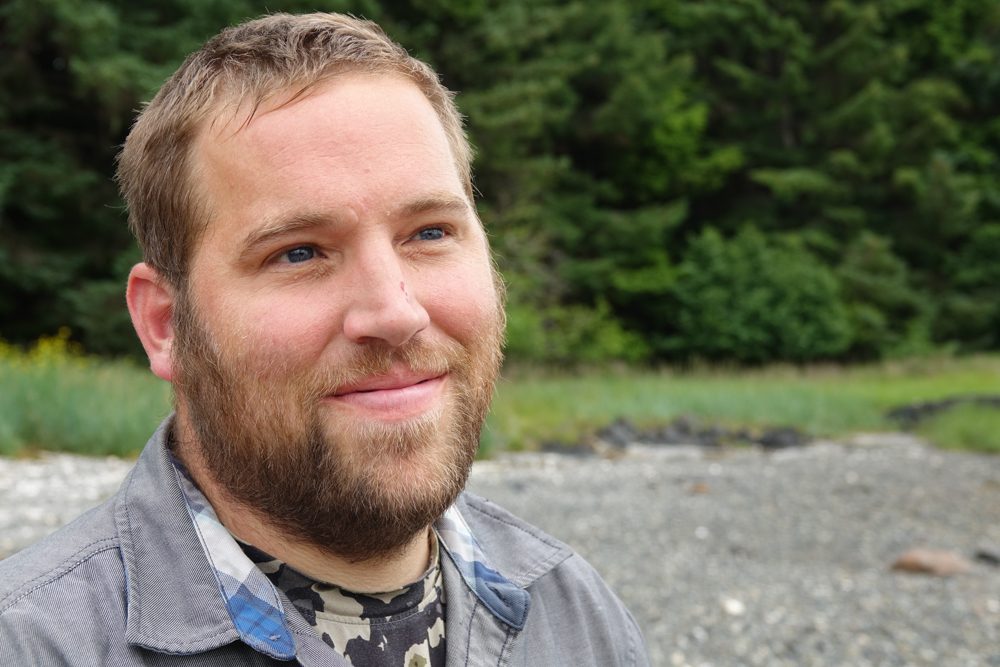
As a 700-pound male brown bear named Smiley towered over him, Bjorn Dihle spoke gently to the bear, saying, “I’m sorry. We’re here,” all the while aiming a can of pepper spray up at Smiley’s face in case he kept coming.
Smiley stared at Dihle and his pregnant wife, backed off a few steps, walked around them and followed his mate, Mocha, into the woods of Admiralty Island.
It had been a rough year for bears in Southeast Alaska, with tiny salmon runs and a berry crop that failed. Dihle and his wife MC had been watching the mating game between the coy Mocha, who swatted Smiley, bit him and ran toward the couple, to use them as a buffer – an attempt, wrote Dihle, to scare Smiley away for a while.
In Smiley’s attempt to cut off MC, it looked like he might have trampled the couple but for Dihle’s calm conversation with the bear towering over them.
Dihle, who grew up in Southeast Alaska, has spent the last 20 years exploring wild places in Alaska, and the last decade as a guide taking people, including film crews, through Southeast Alaska to watch and film bears.
Dihle’s nuanced description of encounters with brown bears, from Southeast Alaska to the Gates of the Arctic, garnered from his own adventures and from those of fellow bear guides, tells of a passion for saving the bears and their habitat for future generations, as part of a complete ecosystem. There are detailed encounters with bears with whom Dihle spoke softly, in situations where shouting or running surely would have resulted in him being severely wounded or killed. There are also the stories of bear hunting guides who later turned their energies to advocating for the bears.
Dihle’s recounting of bears’ brutal attacks on people, some of whom survived and some of whom succumbed, are detailed and not for the faint of heart. However, those who survived attacks did not fault the bears.

“If they really want you, they’re going to get you,” said one man working as a fishery technician for the Alaska Department of Fish and Game. He was armed with a .44 Magnum pistol when he accidentally surprised a large brown bear, and in the scuffle they both rolled off a cliff and tumbled 300 feet down an avalanche chute. “They’re pretty crafty and they can be quiet,” he said. “Most of them don’t want you. Ninety-nine percent don’t want you.”
One such guide, Ralph Young of Petersburg, sometimes spent summers living with bears on Admiralty Island, eating what bears ate and traveling their trails. In his older years, Young tried to pay his debt to the hundreds of bears he’d taken part in killing, and to the wilderness, by fighting to save Admiralty Island from being clear-cut, Diehl said.
In his passion to learn more about the brown bears, Diehl has traveled by foot and packraft over miles of bear-abundant Admiralty and Chichagof islands in Southeast Alaska and the Brooks Range and beyond in North and Northwest Alaska, dodging and also tracking bears and trying at times to stay warm in a wet sleeping bag in the pouring rain, or traveling in deep snow.
And there are the times when he broke camp, saying to grizzlies whose tracks showed they had
Visited a campsite while he slept, “thank you for not killing me.”
For hunters, environmentalists and those who want to know more about Alaska’s brown bears, this is a memorable portrait and call to save the species for future generations.
“A Shape in the Dark” is a 203-page publication of Mountaineers Books, in Seattle.





